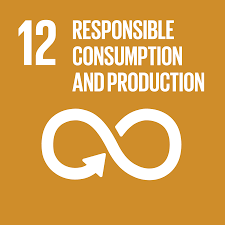Eco-Bricks: The Way to Tackle Single-use Plastic
- Saadat Hussain
- Nov 12, 2020
- 3 min read
Updated: Nov 14, 2020
This article is focused on the following UN Sustainable Development Goal:
Why Do We Need Eco-Bricks?
As we know, there is a lot of plastic pollution around the world. We need efficient waste management to handle the waste effectively. Plastic takes thousands of years to decompose. It has a lot of harmful effects, especially the single-use plastic which we, in India, love to reuse. Plastic is the most poisonous pollutant and has led to the effect of air, water and land pollution. Plastic is dangerous to plants, animals and humans. It is estimated that in the next 20-30 years we will have more plastic in the sea than fish.
Effects of plastic pollution
Plastic waste has a lot of adverse effects on animals such as the aquatic animals. A whale had died since it ingested 40 kilos of plastic waste in place of food and was unable to eat and had died due to starvation. The waste gathers on the ocean due to dumping by people to get rid of plastic waste they dump a lot of waste into the ocean. Moreover, inland it has led to the creation of landfill which makes the places dirty smelly and air toxic, several single-use plastic wastes are dumped together and it contains a lot of dangerous toxins which is released and the seep into the soil and therefore even the groundwater is affected. These are hazardous to the environment and are the major sources of plastic pollution.
What are eco-bricks?
Eco-bricks are made of discarded plastic bottles filled with compacted domestic plastic waste containing a recyclable single-use plastic which is good for recycling waste. Eco bricks consist of plastic bottle mainly pet bottles (mainly water bottles / Pepsi / coke bottles), things which can be put in the bottle and stuffed so hard that it becomes as hard as mud brick, grocery items plastic like small pieces from a toothbrush cover to chips packets, chocolate/ toffee wrappers, plastic box, plastic glass, toothbrush cover, plastic sachets, straws, stirrers and Styrofoam cups or plates etc.
The steps required to make an eco-brick:
1. Take an empty plastic bottle.
2. Make sure that you have lots of segregated single-use plastic waste.
3. When you are ready with these materials then start filling the bottle
4. When the bottle is filled you then start filling it with more force and try to compress it with any hard rod ( such as a wooden spoon etc…) till the time it becomes as hard as a rock.
5. Before stuffing the waste, the plastic waste should be folded as is or should be cut to make it into smaller waste so that waste could be stuffed easily.
6. There should be no space left empty.
Uses of Eco Bricks
Eco bricks can be used to make benches, huts, walls and roads. Here are a few examples:

Curtsey Karma Lakelands
How to take eco bricks forward?
This is one of the ways to tackle plastic waste and these are small steps that can be done by households. Government has to be introduced to these methods and even NGOs. When NGOs get learning about making eco-bricks then they can collect plastic waste from people. What people can simply do as a society is that the plastic waste generated by and people should be kept aside and NGOs can come and pick the plastic waste and they can make eco-bricks. Even people working in their offices and in-company whatever plastic waste is generated they can give it to NGOs for making eco-bricks. In school also eco-bricks can be made where children collectively participate in making eco-bricks. These are the small steps we can ensure that management of waste can be done effectively.
To mention, I have got my inspiration and guidance from Mr. Ashwani Khurana of Karma Lake lands who has revolutionised the whole process of making plastic waste to be moved in the right way and not dumped in the garbage mixed with normal waste.

Curtsey Karma Lakelands
I am glad to inform all that my school The Shri Ram School Aravali has adopted this ECO Brick and a joint effort has put out a sitting bench around our main waiting area for students and parents waiting to pick their wards. (Shri ram school Aravali DLF phase 4)
“The efficient management of our shared natural resources, and the way we dispose of toxic waste and pollutants, are important targets to achieve this goal. Encouraging industries, businesses and consumers to reduce and recycle waste is equally important, as is supporting developing countries to move towards more sustainable patterns of consumption by 2030.”
Bibliography







Comments